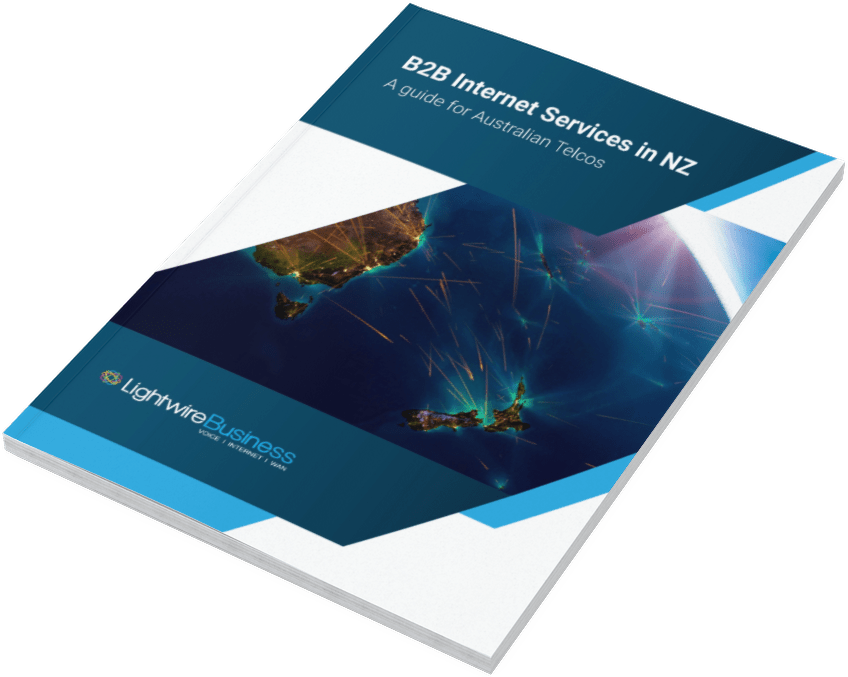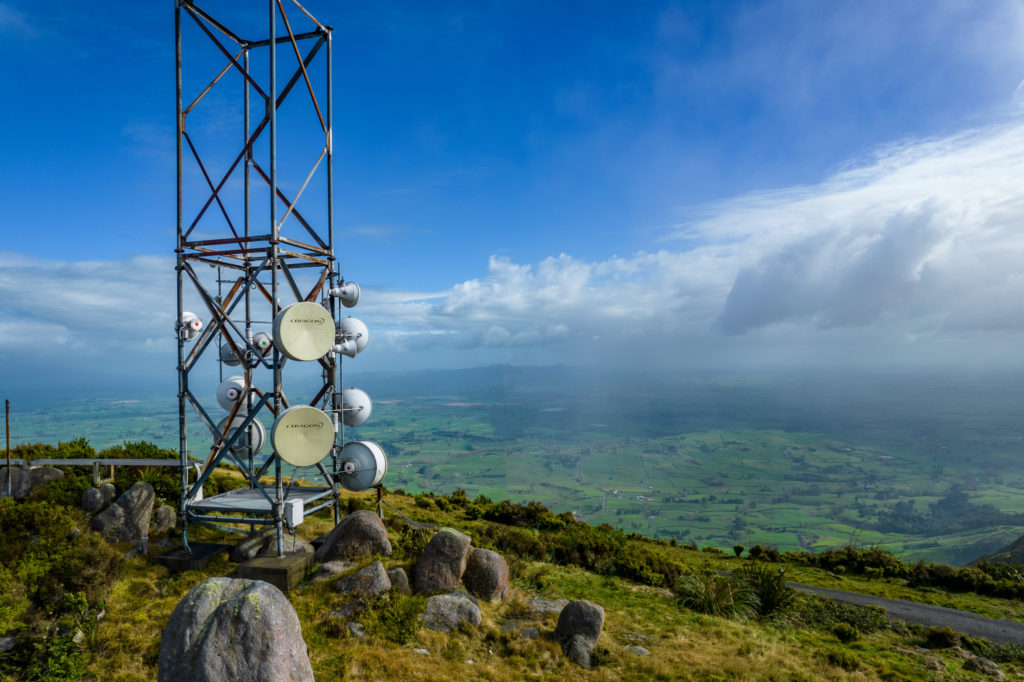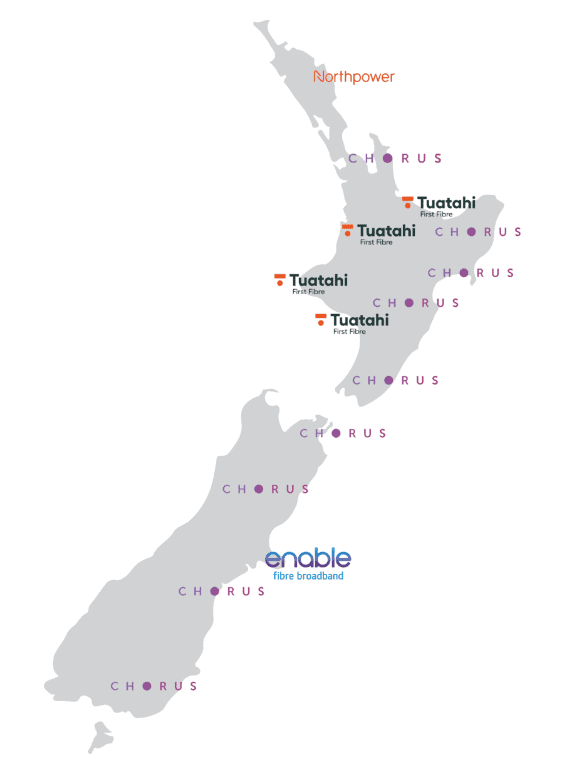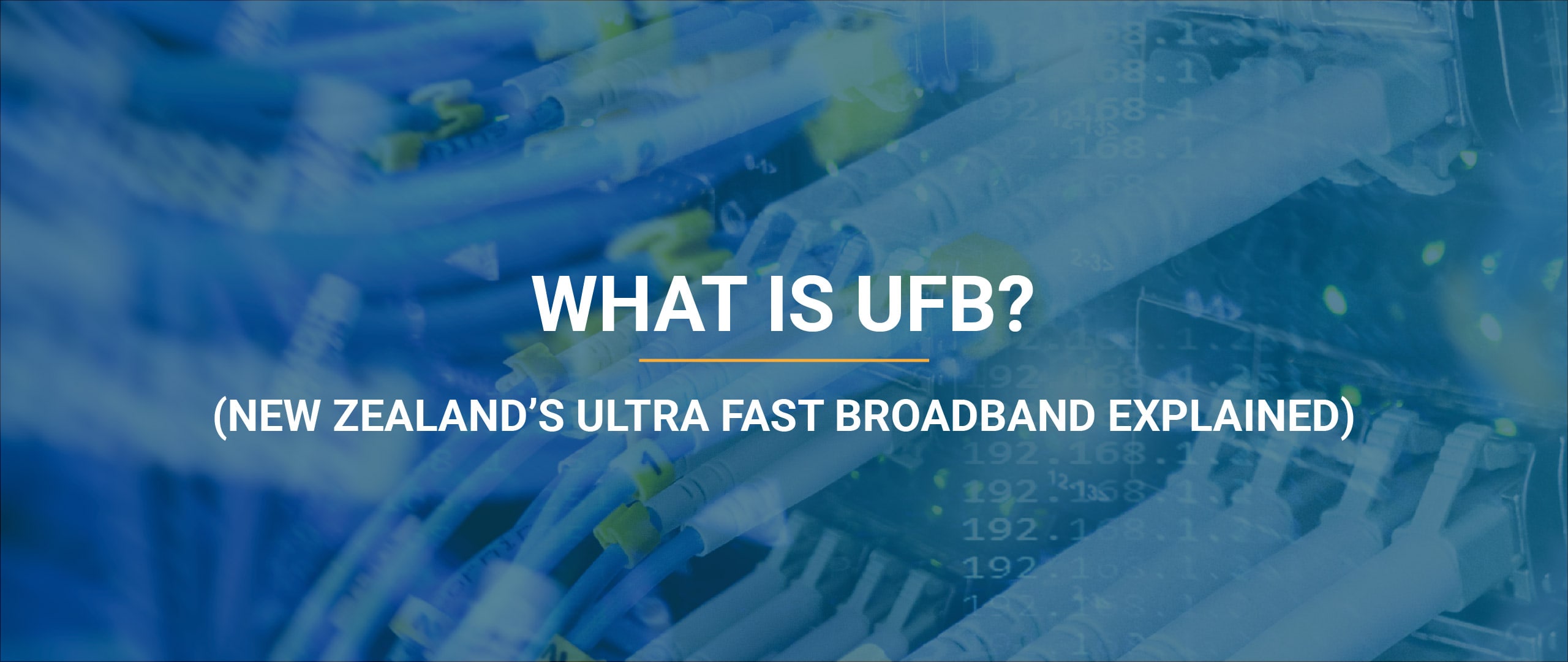Ultra Fast Broadband (UFB) is the name of a program established in 2009 to manage the Government’s $1.5 billion investment in Ultra-Fast Broadband infrastructure. The program was run by Crown Fibre, now known as Crown Infrastructure Partners (CIP for short).

The term UFB has become synonymous with broadband services in NZ, with most residential and business services sold under that acronym.
Unlike the Australian NBN model, a standard fibre-to-the-premise (FttP) approach was adopted across all the carriers making UFB scalable and easy to productise for ISPs.
Also, in stark difference to the NBN model, there has not been a stop sell on copper services where UFB fibre has been rolled out as the service differential, and low-cost price points made a move to UFB a no-brainer for most households and businesses. However, copper services are now being steadily withdrawn across the market as they become end-of-life and no longer of interest to consumers, starting in major metropolitan areas with the highest UFB uptake.
Since 2010 there have been more than a few additional political announcements relating to UFB, illustrating that universal high-speed Internet sits right near the top of the priority list for both major political parties.
Here is some detail on the lesser-known initiatives…
Then along came UFB2
On January 26, 2017, the New Zealand Government expanded the original UFB programme to include additional areas. This second phase of the UFB rollout, called UFB2, meant that 85% of New Zealanders would have had fibre access at the end of 2022.
This initiative extended the reach of the fibre network in New Zealand by 10%. When UFB2 was completed, 423,000 more Kiwis had access to fibre broadband nationwide, ranging from Northland to Wellington, Marlborough to Bluff.
Followed by UFB2+
In September 2017, then Communications Minister Simon Bridges announced plans to run fibre to 190 more NZ towns under the UFB2+ project. $130 million in additional funding was allocated to expand the UFB rollout into towns not previously in scope. Additional funding was also allocated to increase the reach of fixed wireless services, and the RBI2 project was also announced (more on RBI later).
UFB2+ ensured that at the end of 2022, 87% of New Zealanders would have access to UFB, and 99% would have access to high-speed Internet, which in New Zealand is defined as a download speed of 50 Mbps.
Check out the detailed map for the UFB2 fibre rollout.
To see a detailed map for the mobile blackspot and wireless program, check out the RBI2 Black Spot Fund
Become a NZ Internet Pro
Read the guide to get up to speed on everything from high-level market intel to service specific details and all the gotchas in between. No Forms, no calls – 100% free

Rural Broadband Initiative: (RBI & RBI2)
As the name suggests, this initiative is all about connecting the places where it isn’t economically viable to deploy fibre. It initially focused on delivering services via 4G but has morphed into a multi-service offering with fixed wireless services playing an ever-increasing part.
In March 2010, the Minister for Communications and Information Technology, Steven Joyce, announced the Government’s final Rural Broadband Initiative (RBI) proposal. The RBI is a public-private partnership (PPP) working to improve broadband access for rural New Zealanders.
To achieve this, the Government partnered with Chorus and Vodafone to deliver the first phase of the RBI aimed at building 154 new wireless towers, upgrading 387 existing ones, upgrading or installing over 1,000 rural telecommunications cabinets and extending Chorus’ existing fibre network by about 3,350 kilometres.
The original target from 2011 was for 80% of rural households and businesses to access services of 5 Mbps or better and the remaining 20% to achieve speeds of at least 1 Mbps. In October 2015, the Government upgraded their targets so that by 2025:
- 99 per cent of New Zealanders will have access to 50 Mbps peak speeds (up from 5 Mbps).
- The remaining 1 per cent will have access to 10 Mbps (up from 1 Mbps).
In 2017, Crown Infrastructure Partners (CIP) assessed that 90,000 rural households and businesses could not access broadband speeds of more than 20 Mbps download. This led to the RBI2 programme being born and aimed at reducing this number as much as possible by providing fast broadband to the greatest number of under-served rural homes and businesses within the funding available and contributing towards achieving similar rates of access to fast broadband by rural end users across all regions of New Zealand.
CIP has contracted to provide enhanced broadband for approximately 84,000 of these 90,000 households and businesses (including some commercial coverage from mobile operators), commencing deployment in 2018 and substantially completed in 2022.
CIP partnered with the Rural Connectivity Group (RCG), a joint venture between Spark, Vodafone and 2degrees, to provide RBI2 coverage. Alongside this, CIP partnered with nine regional Wireless Internet Service Providers (WISPs), the largest of which is Lightwire.

Rural Capacity Upgrade Program
With the increased minimum speed targets, new thinking was required. The 4G services on offer by RCG and Vodafone were becoming increasingly congested. As COVID kicked in and people moved to remote working, the strain on these networks started to show, with increased complaints around performance and stop-sell orders coming into effect in some regions.
The Government quickly announced a $47m Rural Capacity Upgrade program in the 2022 budget, funded from Covid relief funds and sees new towers built in rural areas experiencing poor performance or limited capacity, as well as technology upgrades carried out on existing towers.
Lightwire was selected as the fixed wireless provider for the Waikato and Bay of Plenty regions. In our patch, the project will see the funds used to enhance broadband speeds over our network further and drive service uptime, resulting in 13,057 locations receiving improved broadband services from 2022 (with all milestones completed by 2024).
Under RCU, we’re upgrading 64 towers on our network with a combination of mains power, installation of fibre, high-capacity wireless backhaul links, and upgrades to physical tower structures to extend the life and capacity of our sites into the future.
Here’s how this funding will allow our customers to do more from their rural locations:
- Fibre and high-capacity wireless backhaul will enable us to connect more users to each tower while delivering higher end-user speeds.
- Mains power allows for the next generation of power-hungry radios that deliver superior performance, which again gets results for our customers – we can also deploy more gear on mains-fed towers, meaning more people connected.
- Modern lithium battery systems provide longer backup in the event of a power outage and help our solar-powered sites stay online longer during bad weather
Nationwide, the Rural Capacity Upgrade program aims to improve broadband services for 47,000 rural locations, and we have been asked to look after a quarter of that number. We take this as a sign of our continued growth and the trust that Crown Infrastructure Partners (CIP) has in Lightwire after our successful rollout of services under our RBI2+ contract.
Wholesale only – the UFB model explained
When designing the initiative, the NZ Government was adamant that Carriers would be able to provide services on a wholesale basis only, with Retail Service Providers (called RSPs or ISPs) providing services to the end users.
At the time Telecom was the biggest show in town, the NZ version or Telstra, and if it wanted a slice of the pie, it would need to structurally separate. That’s how Chorus came to be, and Telecom soon rebranded to Spark.
Chorus retained the fibre and copper assets which positioned it as the front-runner to secure a UFB deal with the Government.
In the end, four separate fibre companies were awarded UFB contracts, but Chorus was the clear winner, with the major markets of Auckland and Wellington awarded to them. So rather than run you through each town by name, here is a visual representation of which Carrier services each region.

In terms of total UFB coverage that equates to:
- Chorus – 69.4%
- Enable – 15.3%
- Tuatahi First Fibre -13.7%
- Northpower – 1.6%
Become a NZ Internet Pro
Read the guide to get up to speed on everything from high-level market intel to service specific details and all the gotchas in between. No forms, no cold calls – 100% free.


